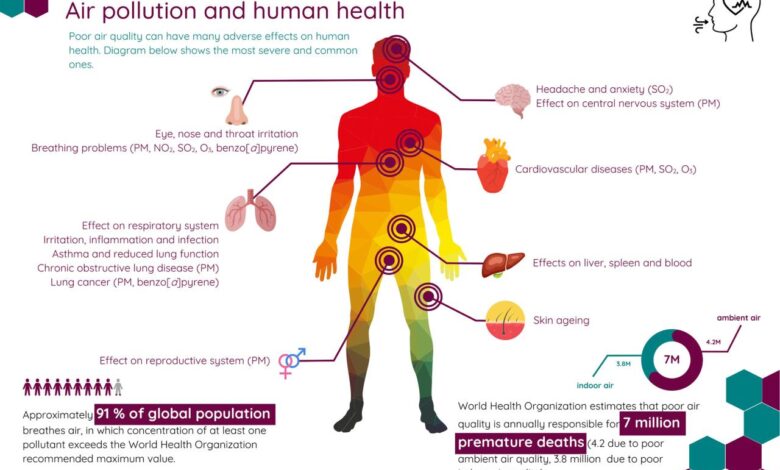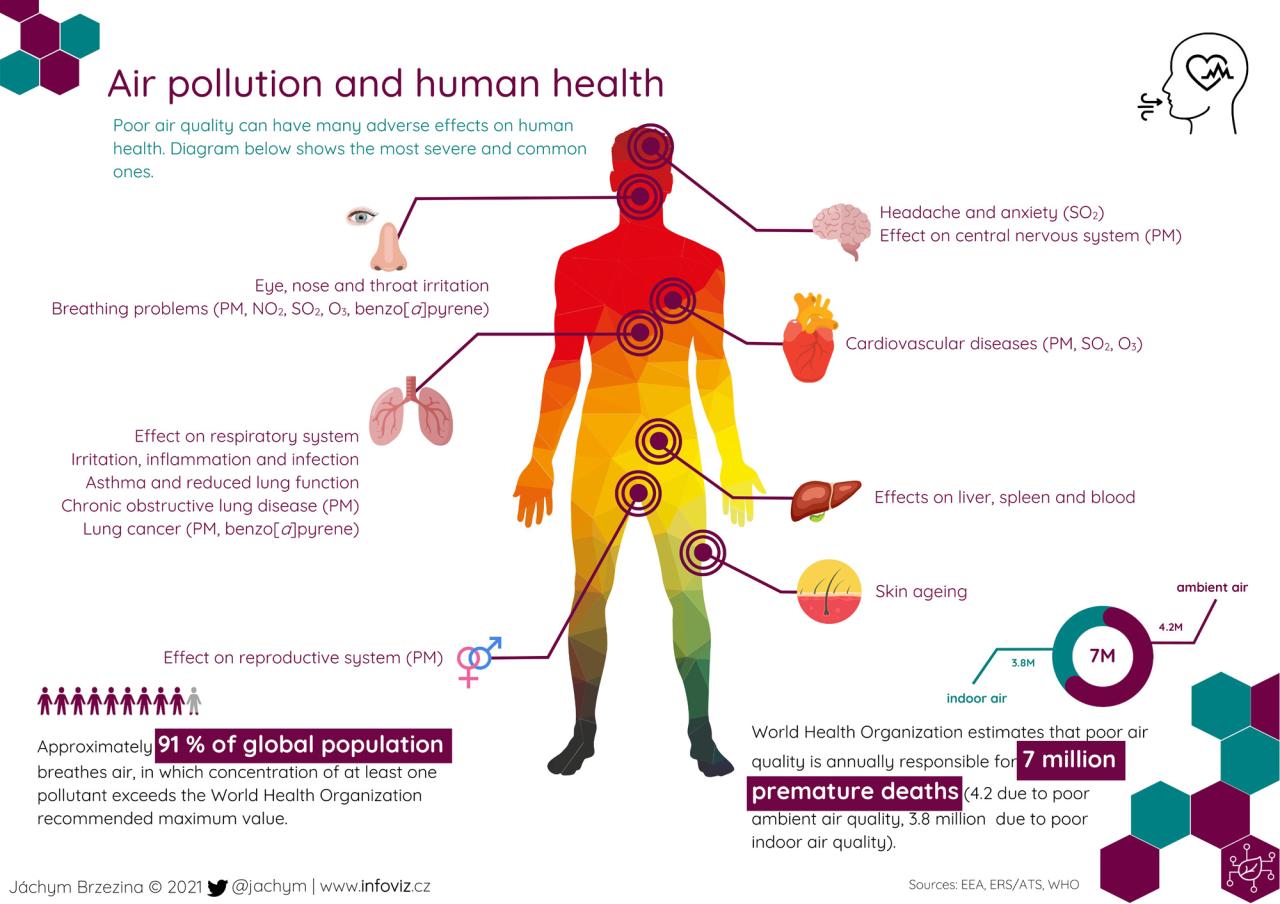
Exercising in Polluted Areas Could Be Bad for Your Health
Exercising in polluted areas could be bad for your health, and it’s not just about the smell. The air we breathe while we exercise can have a significant impact on our bodies, especially in urban environments where pollution levels are often high.
From impacting our lung capacity to exacerbating existing health conditions, the risks associated with exercising in polluted areas are real and shouldn’t be ignored.
Imagine yourself running through a bustling city, feeling the wind in your hair and the rhythm of your feet hitting the pavement. While this sounds exhilarating, it’s important to remember that the air you’re breathing is likely filled with a cocktail of pollutants that can harm your health.
These pollutants, including particulate matter, ozone, and nitrogen dioxide, can penetrate deep into your lungs, triggering inflammation and damaging your respiratory system.
The Health Risks of Exercising in Polluted Areas
Exercising is crucial for maintaining a healthy lifestyle, but when done in polluted areas, it can have detrimental effects on your health. Urban areas are often plagued by various pollutants that can negatively impact your respiratory and cardiovascular systems, especially during physical activity.
We all know that exercising is great for our health, but what about when the air quality isn’t so great? Exercising in polluted areas can actually be harmful, and it’s important to be aware of the risks. If you’re concerned about air pollution, it’s a good idea to eat plenty of fresh produce to help your body fight off toxins.
Check out this great article on 5 pantry staples maximize spring produce for some tips on how to make the most of seasonal produce. By taking steps to protect your health, you can enjoy the benefits of exercise without worrying about the effects of pollution.
This article will delve into the specific health risks associated with exercising in polluted environments.
Types of Pollutants and Their Impact
Urban areas are exposed to a wide range of pollutants, each posing unique threats to our health. Common pollutants include:
- Particulate Matter (PM):These tiny particles, often emitted from vehicle exhaust, industrial processes, and construction, can easily penetrate deep into the lungs, causing respiratory problems, inflammation, and even cardiovascular disease.
- Ozone (O3):A highly reactive gas formed by the interaction of sunlight and pollutants like nitrogen oxides, ozone can damage lung tissue, reduce lung function, and exacerbate asthma symptoms.
- Nitrogen Dioxide (NO2):Primarily released from vehicle exhaust, NO2 can irritate the airways, trigger asthma attacks, and contribute to respiratory illnesses.
- Carbon Monoxide (CO):A colorless and odorless gas produced by incomplete combustion, CO reduces the oxygen-carrying capacity of the blood, potentially leading to cardiovascular problems and fatigue.
During exercise, our breathing rate increases, leading to a greater intake of these pollutants. This heightened exposure can exacerbate the harmful effects of these pollutants, particularly on the respiratory and cardiovascular systems.
Impact on Existing Health Conditions
Exercising in polluted areas can significantly worsen existing health conditions like asthma, heart disease, and lung disease.
It’s important to be mindful of air quality, especially when exercising. Breathing in polluted air can have a negative impact on your lungs and overall health. While it’s great to stay active, consider adjusting your workout routine or finding cleaner areas to exercise.
And if you’re looking for ways to manage your food intake during the holidays, check out these 12 tactics for successful holiday eating. Remember, a healthy lifestyle is a balance of exercise, diet, and environmental awareness. So, prioritize your well-being and find ways to stay active while minimizing exposure to pollution.
- Asthma:Pollutants can trigger asthma attacks, causing wheezing, shortness of breath, and chest tightness. Exercising in polluted air can worsen these symptoms and increase the frequency of attacks.
- Heart Disease:Exposure to air pollution has been linked to an increased risk of heart attacks, strokes, and other cardiovascular problems. Exercising in polluted environments can further strain the heart, potentially increasing the risk of these events.
- Lung Disease:Individuals with chronic obstructive pulmonary disease (COPD) or other lung diseases are particularly vulnerable to the effects of air pollution. Exercising in polluted air can worsen lung function, leading to increased shortness of breath, coughing, and other respiratory symptoms.
Research Findings on Health Risks
Numerous studies have demonstrated the link between exercising in polluted areas and increased health risks. For example, a study published in the journal “Environmental Health Perspectives” found that individuals who exercised in areas with high levels of particulate matter had a higher risk of developing respiratory illnesses, including pneumonia and bronchitis.
We all know that exercising is good for our health, but what about exercising in polluted areas? The air quality can have a serious impact on our lungs and overall well-being. It can be hard to stay motivated when you’re trying to make a change, especially when it feels like the environment is working against you.
That’s why it’s important to find ways to stay on track, even when things get tough. Check out this article on how to stay motivated when starting a new habit for some great tips. Once you’ve found your motivation, you can start looking for cleaner areas to exercise in, or even consider working out indoors when the air quality is poor.
Remember, your health is your priority!
“A study by the American Heart Association found that exercising in polluted air can increase the risk of heart attacks and strokes.”
Another study, published in the “Journal of the American Medical Association,” found a strong association between exposure to air pollution during exercise and an increased risk of cardiovascular problems, such as heart failure and arrhythmias.These findings underscore the importance of considering air quality when planning exercise routines, especially in urban areas.
How Pollution Affects Exercise Performance: Exercising In Polluted Areas Could Be Bad For Your Health

Air pollution can significantly impact your exercise performance, making it harder to breathe and reach your fitness goals. The harmful particles and gases in polluted air can affect your lungs, cardiovascular system, and overall health, hindering your ability to exercise effectively.
Impact on Lung Function and Oxygen Uptake, Exercising in polluted areas could be bad for your health
Air pollution can directly affect your lungs, reducing their ability to function efficiently. When you breathe in polluted air, the tiny particles and gases can irritate your airways, causing inflammation and narrowing. This makes it harder for oxygen to reach your bloodstream, leading to a decrease in oxygen uptake.
This reduced oxygen uptake can significantly affect your exercise performance, making you feel short of breath and fatigued faster. You may also experience a decline in your endurance and overall performance.
Inflammation and Oxidative Stress
Exposure to air pollution can trigger inflammation and oxidative stress in your body. These responses are your body’s way of defending itself against harmful substances, but they can also have negative consequences. Inflammation can lead to muscle soreness and stiffness, hindering your recovery after exercise.
Oxidative stress can damage your cells and tissues, impacting your overall health and fitness.
Increased Risk of Exercise-Induced Asthma and Respiratory Problems
Exercising in polluted areas can increase your risk of developing exercise-induced asthma or exacerbating existing respiratory problems. The pollutants can trigger an inflammatory response in your airways, leading to bronchospasm and difficulty breathing. This can make it challenging to exercise comfortably and safely, especially for individuals with pre-existing respiratory conditions.
Closing Summary
While exercising in polluted areas can be a concern, it doesn’t mean you have to give up your favorite outdoor activities altogether. By understanding the risks and taking precautions, you can minimize your exposure to pollution and continue to enjoy the benefits of exercise.
Monitoring air quality, choosing less polluted routes and times, and wearing a face mask can all help you stay safe and healthy. Ultimately, the key is to be informed and make smart choices that prioritize your well-being.






